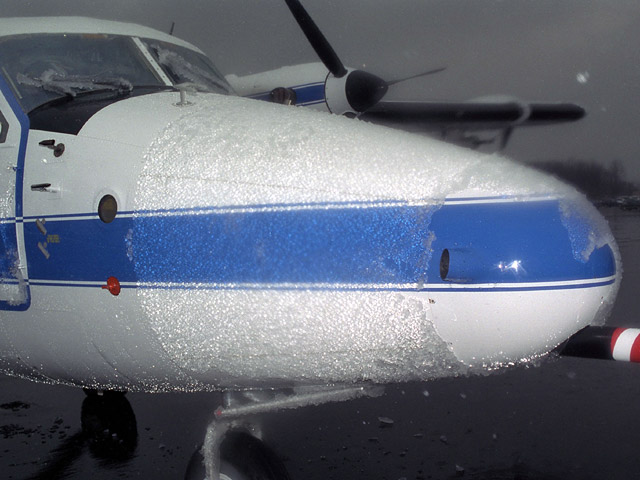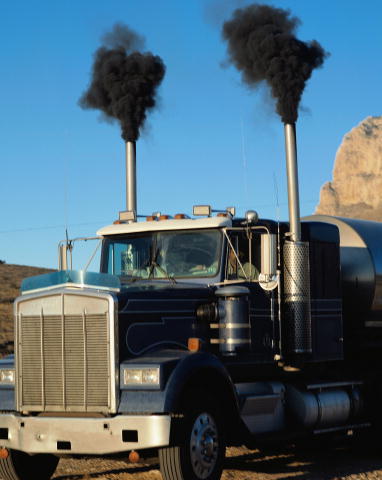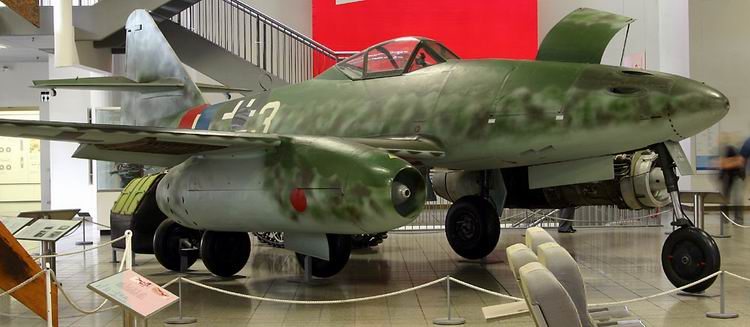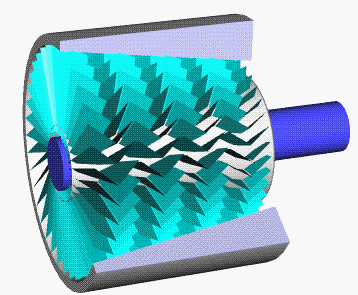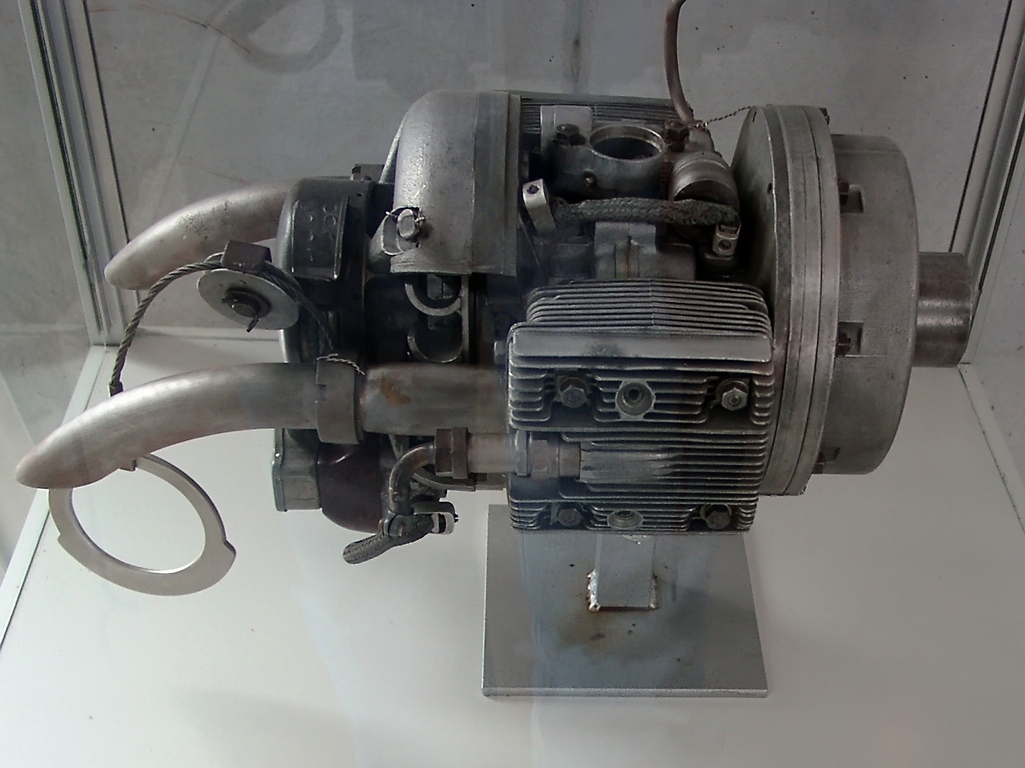|
Avro Chinook
The Avro Canada TR.4 Chinook was Canada's first turbojet engine, designed by Turbo Research and manufactured by A.V. Roe Canada Ltd. Named for the warm Chinook wind that blows in the Rocky Mountains, only three Chinooks were built and none were used operationally. After being scaled up from to , it would become the Orenda. Development In late 1942 the National Research Council of Canada (NRC) sent Dr. J.J. Greene and Malcolm Kuhring to England to report on the various advanced research projects and to see if Canada could play a role in them. One of the team's many topics in the resulting report was an introduction to the work on jet engines being carried out by Frank Whittle at Power Jets. The Department of Munitions and Supply (DMS) thought this was a wonderful opportunity to get in at the "ground floor" of a newly developing field, one that the country could enter with relative ease and thereby reduce their dependence on foreign suppliers for aircraft engines. In early 1 ... [...More Info...] [...Related Items...] OR: [Wikipedia] [Google] [Baidu] |
WikiProject Aircraft
A WikiProject, or Wikiproject, is an affinity group for contributors with shared goals within the Wikimedia movement. WikiProjects are prevalent within the largest wiki, Wikipedia, and exist to varying degrees within Wikimedia project, sibling projects such as Wiktionary, Wikiquote, Wikidata, and Wikisource. They also exist in different languages, and translation of articles is a form of their collaboration. During the COVID-19 pandemic, CBS News noted the role of Wikipedia's WikiProject Medicine in maintaining the accuracy of articles related to the disease. Another WikiProject that has drawn attention is WikiProject Women Scientists, which was profiled by ''Smithsonian Magazine, Smithsonian'' for its efforts to improve coverage of women scientists which the profile noted had "helped increase the number of female scientists on Wikipedia from around 1,600 to over 5,000". On Wikipedia Some Wikipedia WikiProjects are substantial enough to engage in cooperative activities with outsi ... [...More Info...] [...Related Items...] OR: [Wikipedia] [Google] [Baidu] |
Atmospheric Icing
Atmospheric icing occurs in the atmosphere when water droplets suspended in air freeze on objects they come in contact with. It is not the same as freezing rain, which is caused directly by precipitation. Atmospheric icing occurs on aircraft, towers, wind turbines, boats, oil rigs, and trees. Unmanned aircraft are particularly sensitive to icing. In cold climates, particularly those at higher elevations, atmospheric icing is common in winter as elevated terrain interacts with supercooled clouds that can cause icing on contact. Ice loads are a major cause of catastrophic failures of overhead electrical power lines, as power lines can break under the weight of accumulated ice. Therefore, estimation of maximum potential ice load is crucial in the structural design of power line systems to withstand ice loads, and this can be done with numerical icing models and examples that include meteorological data. Formation Water does not always freeze at . Water that persists in liqui ... [...More Info...] [...Related Items...] OR: [Wikipedia] [Google] [Baidu] |
Exhaust Gas Temperature
Exhaust gas or flue gas is emitted as a result of the combustion of fuels such as natural gas, gasoline (petrol), diesel fuel, fuel oil, biodiesel blends, or coal. According to the type of engine, it is discharged into the atmosphere through an exhaust pipe, flue gas stack, or propelling nozzle. It often disperses downwind in a pattern called an ''exhaust plume''. It is a major component of motor vehicle emissions (and from stationary internal combustion engines), which can also include crankcase blow-by and evaporation of unused gasoline. Air pollution from burning fossil fuels is estimated to kill over 5 million people each year. Motor vehicle emissions are a common source of air pollution and are a major ingredient in the creation of smog in some large cities. Composition The largest part of most combustion gas is nitrogen (N2), water vapor (H2O) (except with pure-carbon fuels), and carbon dioxide (CO2) (except for fuels without carbon); these are not toxic or noxious (a ... [...More Info...] [...Related Items...] OR: [Wikipedia] [Google] [Baidu] |
Overall Pressure Ratio
In aeronautical engineering, overall pressure ratio, or overall compression ratio, is the amount of times the pressure increases due to ram compression and the work done by the compressor stages. The compressor pressure ratio is the ratio of the stagnation pressures at the front and rear of the compressor of a gas turbine. Overall pressure ratio in a high-bypass turbofan is a function of inlet pressure ratio and compressor pressure ratio: OPR = IPR \times CPR The terms ''compression ratio'' and ''pressure ratio'' are used interchangeably. Advantages of high overall pressure ratios As can be seen in the formula for maximum theoretical thermal efficiency in an ideal Brayton cycle engine, a high pressure ratio leads to higher thermal efficiency: \eta = 1-\left(\frac\right) where PR is the pressure ratio and gamma the heat capacity ratio of the fluid, 1.4 for air. Keep in mind that pressure ratio scales exponentially with the number of compressor stages. Imagine a gas turbin ... [...More Info...] [...Related Items...] OR: [Wikipedia] [Google] [Baidu] |
Flame Can
A flame () is the visible, gaseous part of a fire. It is caused by a highly exothermic chemical reaction made in a thin zone. When flames are hot enough to have ionized gaseous components of sufficient density, they are then considered plasma. Mechanism Color and temperature of a flame are dependent on the type of fuel involved in the combustion. For example, when a lighter is held to a candle, the applied heat causes the fuel molecules in the candle wax to vaporize. In this state they can then readily react with oxygen in the air, which gives off enough heat in the subsequent exothermic reaction to vaporize yet more fuel, thus sustaining a consistent flame. The high temperature of the flame causes the vaporized fuel molecules to decompose, forming various incomplete combustion products and free radicals, and these products then react with each other and with the oxidizer involved in the reaction of the following flame (fire). One may investigate different parts of a candle ... [...More Info...] [...Related Items...] OR: [Wikipedia] [Google] [Baidu] |
Messerschmitt Me 262
The Messerschmitt Me 262, nicknamed (German for "Swallow") in fighter versions, or ("Storm Bird") in fighter-bomber versions, is a fighter aircraft and fighter-bomber that was designed and produced by the German aircraft manufacturer Messerschmitt. It was the world's first operational jet-powered fighter aircraft and one of two jet fighter aircraft types to see air-to-air combat in World War Two, the other being the Heinkel He 162. The design of what would become the Me 262 started in April 1939, before World War II. It made its maiden flight on 18 April 1941 with a piston engine, and its first jet-powered flight on 18 July 1942. Progress was delayed by problems with engines, metallurgy Metallurgy is a domain of materials science and engineering that studies the physical and chemical behavior of metallic elements, their inter-metallic compounds, and their mixtures, which are known as alloys. Metallurgy encompasses both the ..., and interference from Luftwaffe chie ... [...More Info...] [...Related Items...] OR: [Wikipedia] [Google] [Baidu] |
Fighter Aircraft
Fighter aircraft (early on also ''pursuit aircraft'') are military aircraft designed primarily for air-to-air combat. In military conflict, the role of fighter aircraft is to establish air supremacy, air superiority of the battlespace. Domination of the airspace above a battlefield permits bombers and attack aircraft to engage in tactical bombing, tactical and strategic bombing of enemy targets, and helps prevent the enemy from doing the same. The key performance features of a fighter include not only its firepower but also its high speed and maneuverability relative to the target aircraft. The success or failure of a combatant's efforts to gain air superiority hinges on several factors including the skill of its pilots, the tactical soundness of its doctrine for deploying its fighters, and the numbers and performance of those fighters. Many modern fighter aircraft also have secondary capabilities such as ground-attack aircraft, ground attack and some types, such as fighter-b ... [...More Info...] [...Related Items...] OR: [Wikipedia] [Google] [Baidu] |
Winnett Boyd
Winnett Boyd (October 17, 1916 – January 30, 2017) was a Canadian engineer who made major contributions to the development of the jet engine and nuclear reactor design. Early life and education Boyd's father, Winnett Wornibe Boyd, was stationed in Wales during World War I, where he met Marjorie Sterne St. George, an American. They married, and in 1917 returned to Winnett's home town in Bobcaygeon, Ontario. Growing up, Boyd lived in Bobcaygeon, Port Hope, Bermuda and Toronto. In 1935, Winnett began studying mechanical engineering at the University of Toronto's School of Practical Science. He graduated with a B.Sc. in 1939 and was offered a staff scholarship by the Massachusetts Institute of Technology (MIT). He completed one year of graduate studies at MIT as well as a Teaching Assistantship. Engineering career Between 1940 and 1943, Boyd worked as an engineer for Demerara Bauxite in British Guiana, and for the Aluminum Company of Canada in Montreal and Shawinigan Falls. In ... [...More Info...] [...Related Items...] OR: [Wikipedia] [Google] [Baidu] |
Axial Compressor
An axial compressor is a gas compressor that can continuously pressurize gases. It is a rotating, airfoil-based compressor in which the gas or working fluid principally flows parallel to the axis of rotation, or axially. This differs from other rotating compressors such as centrifugal compressor, axi-centrifugal compressors and mixed-flow compressors where the fluid flow will include a "radial component" through the compressor. The energy level of the fluid increases as it flows through the compressor due to the action of the rotor blades which exert a torque on the fluid. The stationary blades slow the fluid, converting the circumferential component of flow into pressure. Compressors are typically driven by an electric motor or a steam or a gas turbine. Axial flow compressors produce a continuous flow of compressed gas, and have the benefits of high efficiency and large mass flow rate, particularly in relation to their size and cross-section. They do, however, require several ... [...More Info...] [...Related Items...] OR: [Wikipedia] [Google] [Baidu] |
Centrifugal Compressor
Centrifugal compressors, sometimes called impeller compressors or radial compressors, are a sub-class of dynamic axisymmetric work-absorbing turbomachinery. They achieve pressure rise by adding energy to the continuous flow of fluid through the rotor/impeller. The equation in the next section shows this specific energy input. A substantial portion of this energy is kinetic which is converted to increased potential energy/static pressure by slowing the flow through a diffuser. The static pressure rise in the impeller may roughly equal the rise in the diffuser. Components of a simple centrifugal compressor A simple centrifugal compressor stage has four components (listed in order of throughflow): inlet, impeller/rotor, diffuser, and collector. Figure 1.1 shows each of the components of the flow path, with the flow (working gas) entering the centrifugal impeller axially from left to right. This turboshaft (or turboprop) impeller is rotating counter-clockwise when looking downs ... [...More Info...] [...Related Items...] OR: [Wikipedia] [Google] [Baidu] |
Orenda Engines
Orenda Engines was a Canadian aircraft engine manufacturer and parts supplier. As part of the earlier Avro Canada conglomerate, which became Hawker Siddeley Canada, they produced a number of military jet engines from the 1950s through the 1970s, and were Canada's primary engine supplier and repair company. History Origins The origins of the company stem from World War II. During the war, the National Research Council of Canada ran a small aerodynamics effort similar to NACA in the United States or Royal Aircraft Establishment in the United Kingdom. In 1942 they sent two of their researchers to the UK to take a survey of their efforts and report on what fields of study the Canadians should focus in order to avoid duplication. Over the next year a number of members of the NRC's aerodynamics lab traveled to the UK, and in May 1943 they published their findings in the top secret ''Report on Development of Jet Propulsion in the United Kingdom'', widely known as the Banks Repor ... [...More Info...] [...Related Items...] OR: [Wikipedia] [Google] [Baidu] |
Junkers Jumo 004
The Junkers Jumo 004 was the world's first production turbojet engine in operational use, and the first successful axial compressor turbojet engine. Some 8,000 units were manufactured by Junkers in Germany late in World War II, powering the Messerschmitt Me 262 fighter and the Arado Ar 234 reconnaissance/bomber, along with prototypes, including the Horten Ho 229. Variants and copies of the engine were produced in Eastern Europe and the USSR for several years following the end of WWII. Design and development The feasibility of jet propulsion had been demonstrated in Germany in early 1937 by Hans von Ohain working with the Heinkel company. Most of the Reich Air Ministry ( RLM) remained uninterested, but Helmut Schelp and Hans Mauch saw the potential of the concept and encouraged Germany's aero engine manufacturers to begin their own programmes of jet engine development. The companies remained skeptical and little new development was carried out. In 1939 Schelp and Mauch visit ... [...More Info...] [...Related Items...] OR: [Wikipedia] [Google] [Baidu] |
